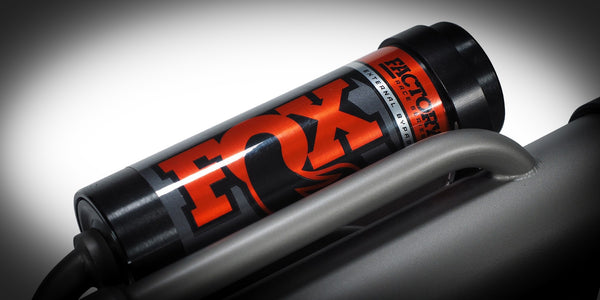
The Benefits of Remote Reservoir Shocks
Some people mistakenly think of remote reservoir shocks just for those that want to add some bling to their rides. The hordes of brodozers and pavement pounders with multiple remote reservoir shocks affixed to them only reinforce this notion. Yes, remote reservoirs might look cool. But they play an essential role and have some substantial benefits. Just what are they? Read on and we will explain.
Before getting into the benefits of them, we should explain how remote reservoir shocks work. On the inside of a monotube shock is a chamber filled with oil and divided by a valving piston. As the shock cycles, oil flows through the valving piston's ports and shims, generating compression and rebound damping. Another free-floating piston inside of this chamber separates the oil from a gas charge. Pressurizing the shock with a gas charge significantly reduces aeration under harder use. A remote reservoir shock takes this free-floating piston and gas charge out of the main shock body and puts it into a separate reservoir.

Keeping Your Cool
Heat is the sworn enemy of shock performance. If too much heat develops in a shock, air bubbles form in the shock oil. Once this aeration happens, the viscosity of the shock oil goes down significantly, creating a mushy feeling and a lack of damping control. A remote reservoir aids cooling in two ways. First, a remote reservoir shock can hold more shock oil since there is no longer a free-floating piston and gas charge taking up space inside of the shock body. Secondly, the remote reservoir (and even the reservoir hose) act as heat dissipators helping to get rid of excess heat. Both of those might not sound like much, but they can play a significant role in keeping shock oil temperatures in check.
Every Inch Matters
Most people think the only benefit of remote reservoir shocks is their extra cooling capacity. But, another significant advantage is that a remote reservoir shock can offer more suspension travel than a non-reservoir shock of the same size. How is that even possible? Well, with the gas charge and free-floating piston no longer in the shock body, there is more room for the valving piston to travel. The shock can now take advantage of using the whole shock body instead of just most of it. And when it comes to wheel travel, every little bit helps.
Under Less Pressure
Another advantage of a remote reservoir shock is that they use significantly lower gas pressure compared to a non-reservoir monotube shock. This lower pressure has more "give" to it as the free-floating piston tries to compress it. The result is less harshness as the shock runs through its full stroke. Less pressure is also easier on seals helping them to last longer. And, the pressure in a remote reservoir shock is adjustable for a bit of tunability.
Are They For You?
So the big question is are remote reservoir shocks right for you? Well, it depends upon how you are using your vehicle. If you are poking around trails in low-range without a lot of suspension movement, then you can probably skip them. But don't think that you have to be beating on your rig hard to need them. We once melted the paint off our shocks running down a 15-mile long dirt road to a hidden surf spot in Baja. The road wasn’t extremely rough, and we weren't hauling ass (we were in an S-10 Blazer so that was impossible). But we did generate enough heat in our shocks to overwhelm them completely. We custom-made some remote reservoir shocks for the Blazer and didn't have any heat issues on the next trip. Remote reservoirs can definitely make a difference and Fox’s unique DSC adjusters (click here for more information on DSC adjusters) are only found on their remote reservoir shocks.
